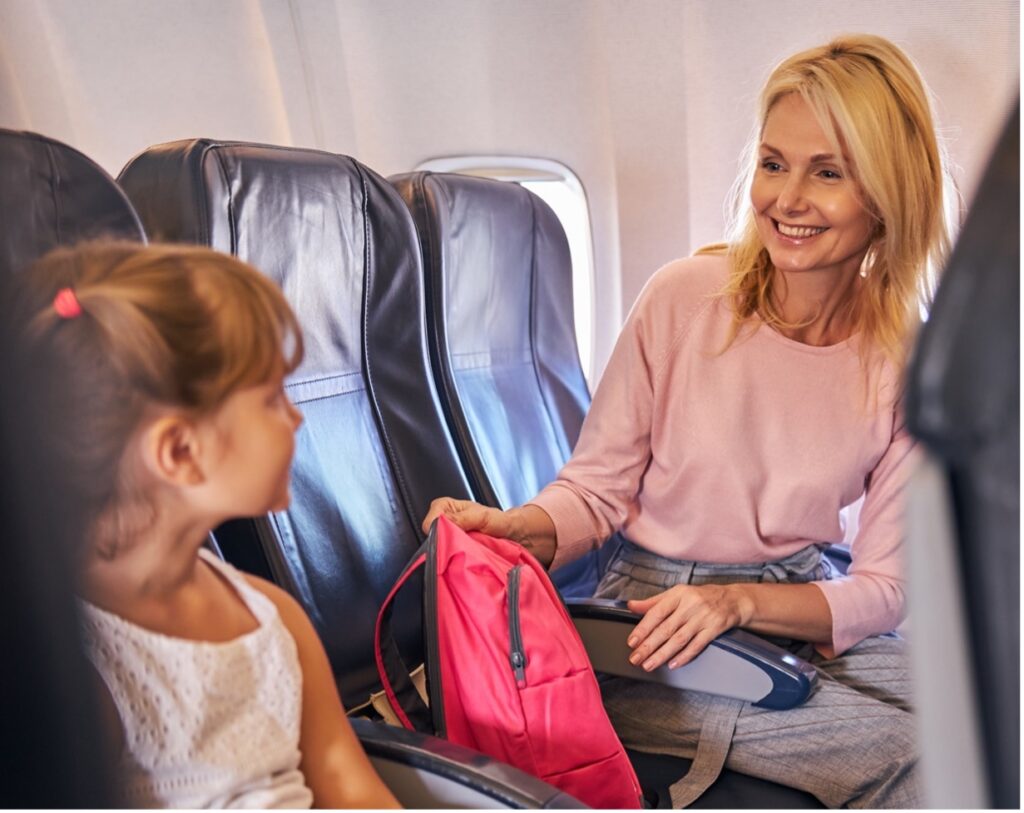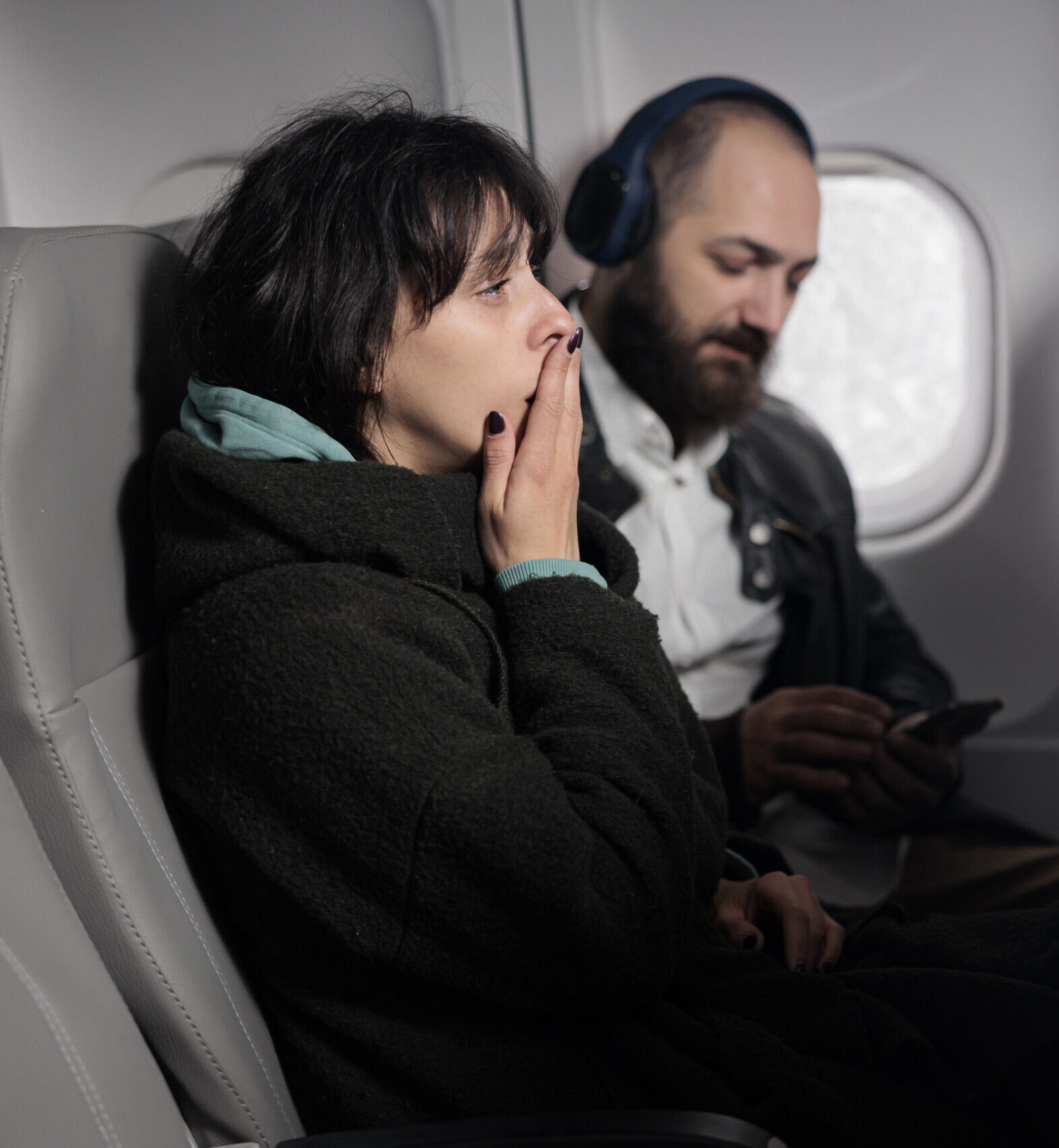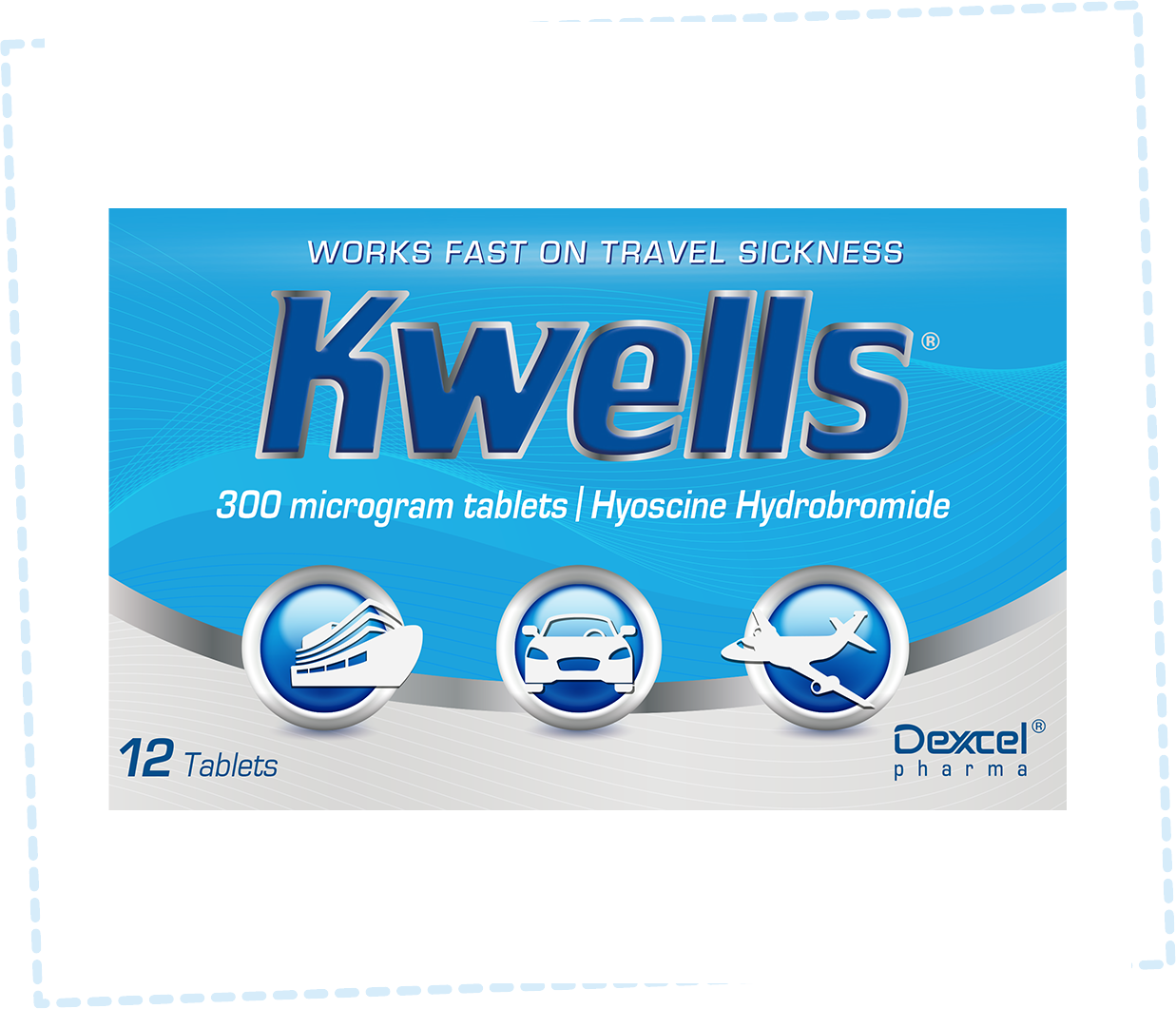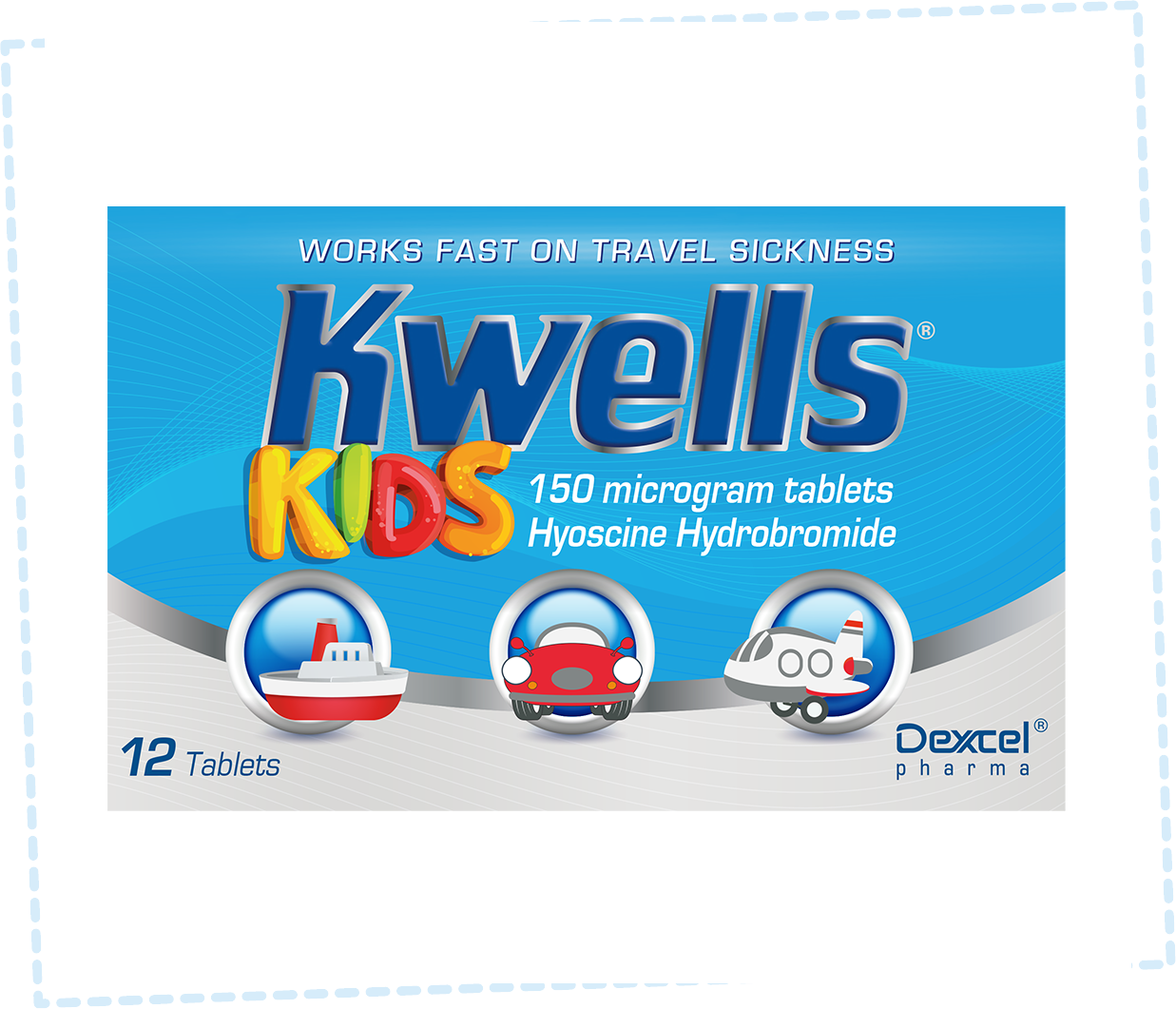What is motion sickness? Causes & treatments
Many of us have experienced motion sickness at some point in our lives.
In fact, one in three people are considered ‘highly susceptible’ to the condition and pretty much everyone is susceptible to it if there are significant amounts of motion!1
What is motion sickness?
Motion sickness is the ill-feeling you can get from motion – that could be travelling by car, boat, plane or train, riding a roller coaster or VR gaming1 – a relatively new discovery in the motion sickness stakes which is commonly known as VR gaming sickness.
We say relatively because motion sickness – or travel sickness – goes back to when wheels were first put in motion and when the first ships sailed the high seas.2
It was known as cart or ship influence and the word ‘nausea’ – a common symptom of motion sickness – comes from the Greek ‘nausia’ or ‘nautia’ which originally meant seasickness.3
What causes motion sickness?
Motion sickness is understood to be caused by a sensory mismatch which confuses the brain. While our eyes are telling our brains we’re not moving because we’re sitting down – particularly if we’re looking down at our phones or reading a book – our inner ears are sensing motion.4
This mismatch of information causes a conflict in the brain which can then trigger the symptoms of motion sickness.1 These symptoms include feeling sick (nausea), sweating, headaches, increase in saliva, feeling cold and weak and going pale.5
Why am I prone to motion sickness?
Whether it’s you or your child or another family member prone to travel sickness, it’s unpleasant and it can be upsetting, particularly for youngsters.
To be fair it’s not fun whatever age you are and can make you a little anxious about a journey – or a day at the theme park!
It’s not fully understood why some people are more susceptible than others.
It’s more common in children aged two to 12 – babies rarely suffer from it* – and women, especially during pregnancy or menstruation which may be linked to fluctuating oestrogen levels.6
Those who suffer from migraines appear more likely to suffer from motion sickness, there’s even been studies into whether it’s a genetic or inherited condition.1

How to stop motion sickness
Kwells is here to try and help everyone to travel happier and with over 70 years of expertise in providing over-the-counter travel sickness remedies, we know more than a thing or two about trying to prevent it.
First and foremost, motion sickness shouldn’t stop you from travelling, going on adventures and doing the things you enjoy. Depending on how you’re getting to your destination – or even if you’re just staying put with your VR gaming headset – there are things you can try to prevent or relieve the symptoms of motion sickness.
If you’re travelling in a car, boat, plane or train it’s best to be prepared with bags, wipes, etc – just in case. Eating a light, carb-based food like cereals a couple of hours before a journey can help to reduce car sickness, seasickness, airsickness or train motion sickness.5
Plan some breaks into your car journey to get some fresh air or go for a short walk and take plenty of cold water to drink.5 Sitting in the front of a car, over the wing of a plane or in the middle of a boat helps to keep the motion you experience to a minimum.5
Closing your eyes can help to reduce the sensory signals to the brain – sleeping is even better if you can.5 There are several things to avoid, reading being the most obvious, but an audiobook, podcast or music is a good way to distract the brain away from those motion signals.5
Don’t be tempted to eat too much before a journey and try to steer clear of fatty or spicy food.5 Looking ahead at the road – a driver’s eye view if you like, as drivers are less likely to get motion sickness – or looking at the horizon can also help.5

How to prevent motion sickness on rides?
As kids we queued for hours and clamoured to get on the fastest rides and the highest rollercoasters. By the time our own children are big enough we can be a little less keen and a lot queasier.
That doesn’t mean we have to miss out on all the family fun though – following similar advice given for motion sickness while travelling, we may still be able to scream to go faster with the best of them!
Before you take on the highs, lows, ups and downs of the theme park, try eating a light, carb-based meal an hour or two beforehand – it’s best to avoid the temptation of fairground burgers vans! Try to pick a seat in the most stable part of the ride or carriage, usually the middle.
VR gaming sickness
Motion sickness is an unfortunate side effect for some VR gamers and one that headset manufacturers are constantly looking to fix.
It’s caused by the same sensory mismatch – you’re standing still but the virtual environment is moving around you.4
It’s the lag time or ‘latency’ in the game – which is the time it takes for movement to register on the headset display – which is thought to cause the brain to receive confusing signals.4
To reduce the risk of VR gaming motion sickness try playing for shorter periods of 15-30 minutes and build up gradually. Take regular breaks, step outside for fresh air or keep the room cool by opening a window. Try sitting down to restrict your movements and therefore minimise disorientation.
For more tips, insights and advice head to our VR gaming sickness blog here
Ever felt nauseous or lightheaded while scrolling away on your phone or staring a computer screen for too long? This is known as cybersickness and while it’s not the same as VR gaming sickness in that physical movement isn’t involved, a moving screen can still cause the same sensory mismatch. Try to take a break and get some fresh air and refreshment to relieve the symptoms.7
Further help
So, what can you do if self-help methods aren’t working?
You can speak to your local pharmacist for motion sickness medication advice.8 They will be able to provide information and advice on suitable over-the-counter remedies.
Kwells 300 microgram tablets* or Kwells Kids 150 microgram tablets* can be used on short or longer journeys and taken every six hours – no more than three times in 24 hours.
Because Kwells tablets melt in the mouth, absorption into the bloodstream is very rapid and they can be taken up to 20–30 minutes before travelling or at the onset of sickness.
*Kwells 300 microgram tablets. For the prevention of travel sickness, suitable for adults and children aged 10+. Contains Hyoscine Hydrobromide 300 microgram. Kwells Kids 150 microgram tablets. For the prevention of travel sickness, suitable for children aged 4+. Contains Hyoscine Hydrobromide 150 microgram. Always read the label.

IMPORTANT
Medicines can affect the unborn baby. Always talk to your doctor or pharmacist before taking any medicine in pregnancy.
You can browse our products here
If you have any doubts about using Kwells tablets correctly, seek the advice of your pharmacist or doctor.
References:
1. https://medlineplus.gov/genetics/condition/motion-sickness/#frequency
2. https://www.dizziness-and-balance.com/disorders/central/motion.htm
3. https://www.ncbi.nlm.nih.gov/pmc/articles/PMC1471970/#:~:text=The%20word%20nausea%20comes%20from,or%20feeling%20sick%20(adjective)
4. https://kwellstravel.com/blog/travel-sickness-tips/
5. https://patient.info/travel-and-vaccinations/health-advice-for-travel-abroad/motion-travel-sickness
6. *Fasttrack: Managing Symptoms in the Pharmacy – Alan Nathan
7. https://www.whijournal.com/article/S1049-3867(08)00010-8/fulltext
8. https://www.healthline.com/health/cybersickness#vs-motion-sickness
9. https://www.nhs.uk/conditions/motion-sickness/
Travel Happy Tips
Kwells 300 microgram tablets. For the prevention of travel sickness, suitable for adults and children aged 10+. Contains Hyoscine Hydrobromide 300 microgram. Kwells Kids 150 microgram tablets. For the prevention of travel sickness, suitable for children aged 4+. Contains Hyoscine Hydrobromide 150 microgram. Always read the label








